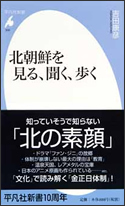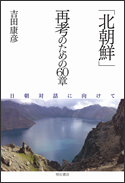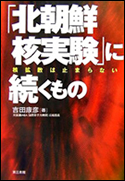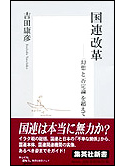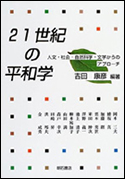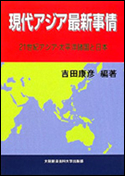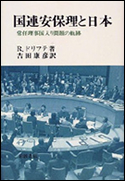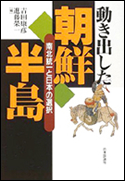2006年9月14日
【10】A Northeast Asian Nuclear-Weapon-Free Zone as a Step Toward an East Asian Community (September 2006)
Osaka University of Economics and Law
(Hanoi, 14-16 September 2006)
INTRODUCTION
An East Asian community is an illusion. The ASEAN is a reality. The ASEAN has a substantial and successful record of regional cooperation in the past since 1967, first as an anti-communist political bloc and now in the post-Cold War era, as an economic community. The 10 ASEAN member states share a common goal in trade and investment, as well as common political interests and cultural values.
However, once expanded toward northeast,----Japan, China and Korea, they are quite different from each other. Their economies are increasingly inter-dependent, with Japan-China trade marking a record high in history, which registered a total of 200-billion dollars in annual both-way trade value in 2005. Political relations between Tokyo and Beijing have worsened during the five-year rule of Prime Minister KOIZUMI, who every year visits the YASUKUNI Shrine enshrining TOJO Hideki and the other A-class war criminals responsible for invading the Asian Continent during the World War Two.
Japan and Korea, both North and South, are also tense in their political relations. There have been disputes over territorial, post-colonial rule compensation and YASUKUNI Shrine issues. North Korea’s KIM Jong Il regime is a source of trouble. Tokyo and Pyongyang are hostile to each other, while Beijing and Seoul are supportive of the KIM Jong Il regime.
For a community, there must be a common basis in a political goal, economic interests as well as cultural values. Except for economy, there is none in Northeast Asia. In addition, during the first East Asian summit in Kuala Lumpur in December 2005, no agreement was reached on the scope of a future community. China maintained that membership be limited to the countries in East Asia, namely the ASEAN, China, Japan and Korea.
On the other hand, Japan proposed that India and Australia be included, eventually together with the United States and Russia. Strong rivalry between Japan and China overshadows the future of an East Asian community.
THE IDEA OF NORTHEAST ASIAN NUCLEAR-FREE ZONE
Now, let me concentrate on the specific subject of my presentation, the creation of a Northeast Asian Nuclear-Weapon-Free Zone, comprising Japan, the Korean Peninsula and Mongolia. I am one of the original proponents of the idea which emerged shortly after the collapse of the Cold War structure.Despite the lack of a cooperative spirits in Northeast Asia toward an East Asian community, denuclearization of the region is a subject of the most serious concern for all people of Japan, who suffered the tragedies of the atomic bombings of Hiroshima and Nagasaki in 1945. Peace and security is always a priority issue.
Japan has three-non-nuclear principles, not possessing, not manufacturing and not introducing nuclear weapons. It was in 1967 that Prime Minister SATO Eisaku adopted the principles as Japan’s basic policy. He was later awarded the Nobel Peace Prize. And four years afterward, the principles were confirmed in a resolution in Japan’s Parliament. It is dubious, however, that the third principle?not introducing nuclear weapons into the Japanese territory---has been respected. It is highly likely that the U.S. forces secretly bring nuclear warheads into its military ports and bases in Japan. For security reasons, it is the official policy of the U.S. forces not to confirm or not to deny the whereabouts of nuclear weapons. Therefore, a new international framework to guarantee the three principles is indispensable.
Total denuclearization of the Korean Peninsula is a common goal for the Six-Party Talks on North Korea’s nuclear issue. The goal was first pledged in the Joint Declaration on Denuclearization of North and South Korea signed in 1992, and was endorsed in the Joint Statement of the Six-Party Talks signed in Beijing in September 2005.
Mongolia declared itself as a nuclear-free state in 1992, and the five nuclear-weapon states agreed to respect it in 2000.
The Northeast Asian Nuclear Weapon-Free Zone would therefore be formed with Japan, North and South Korea, and Mongolia signing a treaty jointly pledging that any nuclear weapons be prohibited from the region.
As in the other nuclear-weapon-free zones, the surrounding nuclear-weapon states, namely, the United States, China and Russia, should be invited to sign a protocol offering the so-called negative security assurance, by which they refrain from nuclear attacks or threats by nuclear weapons on the Member States within the region.
Difficulties at present are the existence of the Japan-U.S. Security Treaty and the U.S.-South Korea Mutual Assistance Treaty, under which both Japan and South Korea are protected by the American nuclear deterrence.
Another stumbling bloc is North Korea’s on-going nuclear weapons program. North Korea declared in February 2005 that they possess nuclear weapons. North Korea’s nuclear weapons program is basically a bargaining chip to deal with the United States for the survival of the KIM Jong Il regime, which has officially announced its readiness for total abolition of nuclear arms and materials, on a gradual and reciprocal basis, in return for concessions from the United States.
However, there has been no progress since September 2005 in the six-party talks in Beijing, due to deep mutual distrust between Pyongyang and Washington. The Bush Administration apparently does not still abandon its ambition to topple the Kim Jong Il regime. A shift in the U.S. policy toward North Korea in reviving direct dialogue for eventual normalization of diplomatic relations is strongly anticipated.
MODELS IN OTHER REGIONS
You already have a Southeast Asian Nuclear-Weapons-Free Zone, as provided in the Bangkok Treaty signed in 1995. In the case of the Bangkok Treaty, the five nuclear-weapon states have not signed the attached protocol over the difference in views on the right to free navigation in continental shelves and exclusive economic zones (EEZs) in the region. In any case, the scope of a nuclear-weapon-free zone could be extended to the whole of East Asia, once a Northeast Asian nuclear-weapon-free zone has been inaugurated.
Today, the southern hemisphere of the globe is covered by the nuclear-weapon-free zones, as provided in five regional treaties; namely, the Antarctic Treaty for Antarctica, the Tlatelolco Treaty for Latin America, the Rarotonga Treaty for the South Pacific, and the Pelindaba Treaty for Africa, as well as the Bangkok Treaty for Southeast Asia.
There had been none in the northern hemisphere. However, quite recently on 8 September, a long-delayed treaty was signed in Semipalatinsk, Kazakhstan, designating the five nations in Central Asia as a new nuclear-weapon-free zone.
There still are three volatile regions in the northern hemisphere; namely the Middle East, South Asia and Northeast Asia. Israel and Iran are sworn enemies in the Middle East, while India and Pakistan are also staunch rivals in South Asia.
But in Northeast Asia, only North Korea is a nation in question in terms of nuclear proliferation. It is hoped that time will come when total denuclearization of the Korean Peninsula is implemented, with both Pyongyang and Washington terminating their confrontation policy toward each other.
Out of the five existing zones in the southern hemisphere, the South Pacific Nuclear-Free Zone, as stipulated in the Rarotonga Treaty in 1985, precludes any radioactive waste and materials from being dumped into the oceans in the region. Any nuclear blast for whatever purposes is also prohibited. This is the best model of not only a nuclear-weapon-free, but a real nuclear-free zone.
CONCLUSION
Even if an East Asian community is a remote goal, a network of free-trade agreements (FTA) is being established to promote regional economic cooperation to ensure a free flow of personnel, merchandize and money as well as information.
Multilateral security arrangements are a next challenge for the region. The ASEAN Regional Forum has paved the way for maintaining dialogue with North Korea. As compared with Europe, Asialags behind in working out a multilateral security network. But it should be welcomed that with the ASEAN’s initiative, Northeast Asia is being integrated into the whole of East Asia.
The ASEAN’s initiative is indeed appreciated to minimize disadvantageous effects of big power rivalry between Japan and China on future projects. A Northeast Asian nuclear-weapon-free zone is also an area where there is no serious rivalry between Japan and China.


